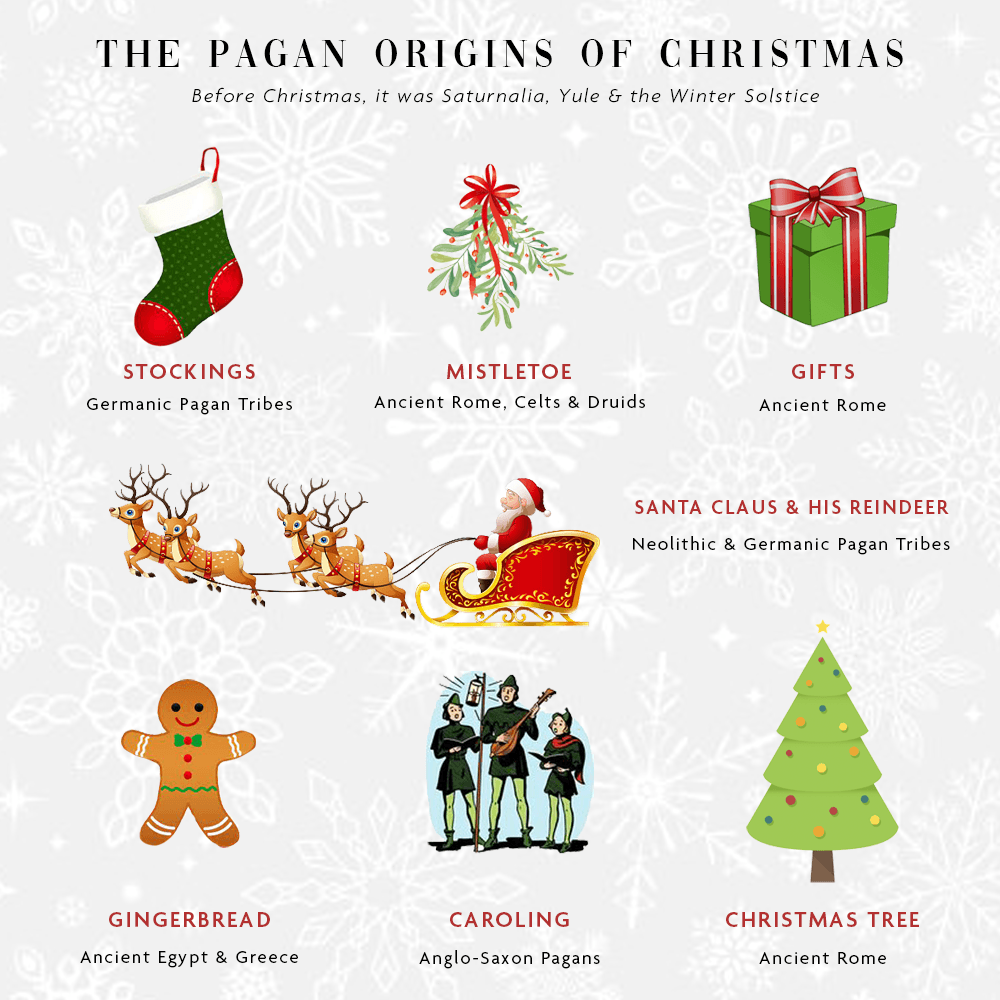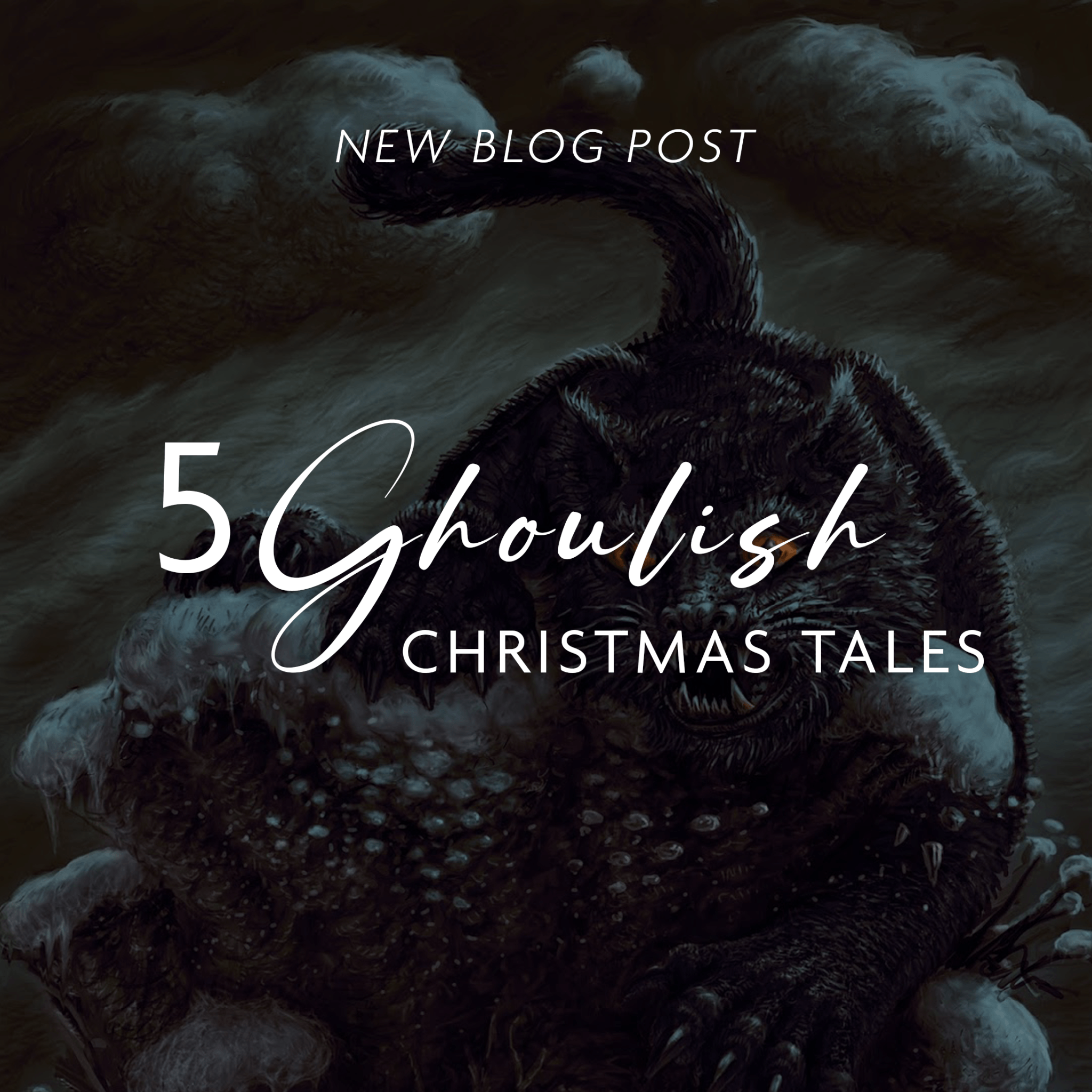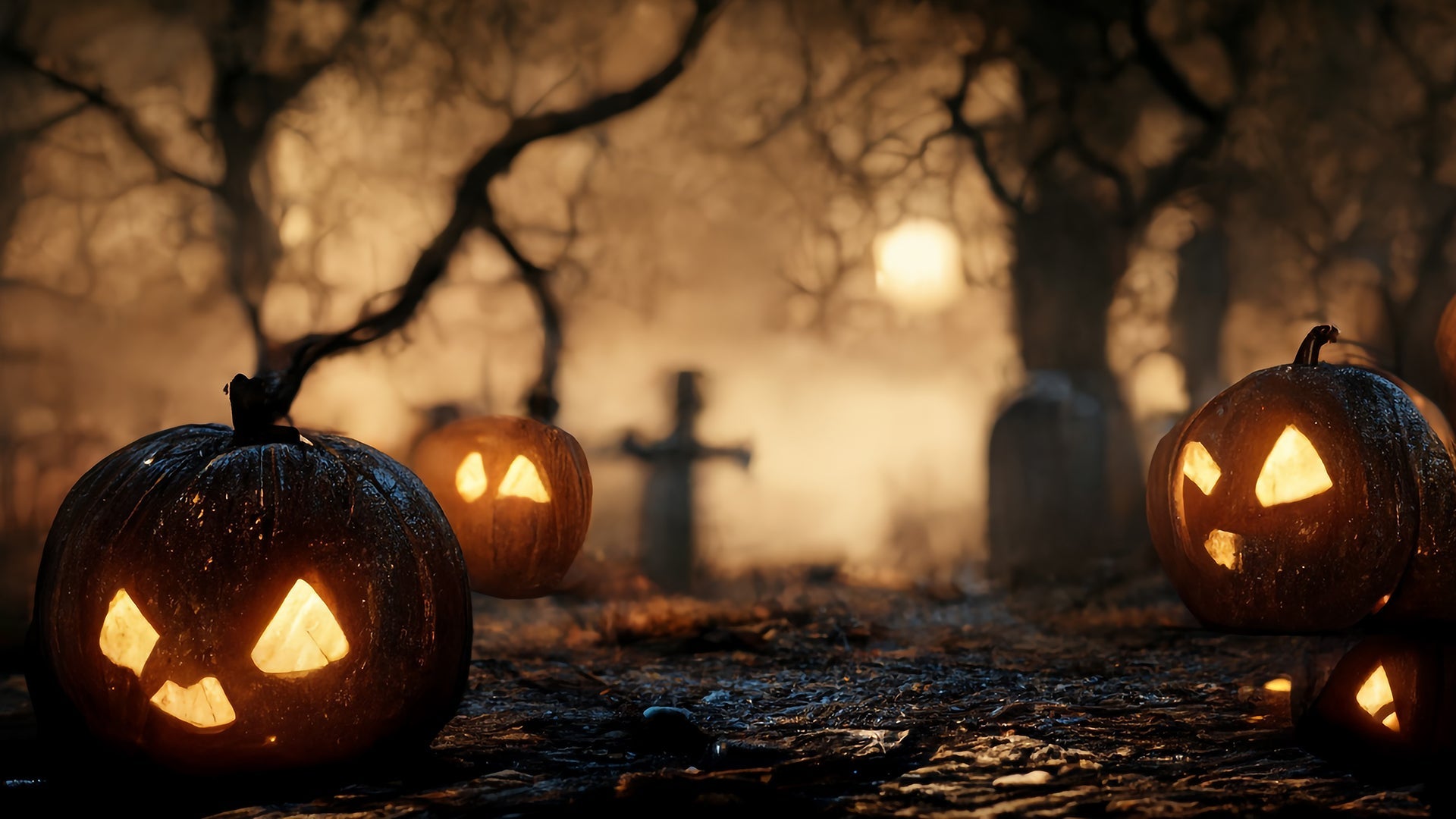The Pagan Origins of Christmas Traditions

Christmas as we know it today is a mish-mash of multiple Pagan traditions and rituals painted over with the brush of Christianity. In an effort to recruit Pagans to the new faith, priests melded Christian stories with Pagan holidays already in place, like Yule, Saturnalia and the Winter Solstice. Many of our beloved Christmas traditions like the Christmas tree and Santa Claus himself have much older origins.
0

SANTA CLAUS
The jolly Saint Nick dressed in red that we see today mostly arose from an old Coca-Cola ad campagin in the ealry 1900's. The original Saint Nicholas comes from ancient Germanic tribes who worshiped a god called Odin, or Old Man Odin. Bearded and armed, he would fly around the world on his 8-legged horse called Sleipnir. Children left out boots filled with treats for Sleipnir, and Odin would reward those children with gifts in their boots - our modern day stockings.
0

REINDEER
Well before any of these other holidays appeared, the Northern Neolithic (7000-1700 BCE) peoples believed in the Deer Mother . Reindeer were crucial to these peoples' survival, and it was the female deer that kept their antlers year-round and led the herds. The mythical Deer Mother would fly across the sky on the Winter Solstice and bring back the light of the sun. A few traditions also speak of their Sun Goddess riding on a sleigh pulled by a herd of reindeer on the Winter Solstice, dropping pebbles of amber into chimneys.

CAROLING
The original term for singing boisterously in the streets around the Winter Solstice is "Wassailing".In Medieval England, the peasants of the land would visit the Lord and sing in exchange for gifts. They also offered a drink from a communal bowl. It began a tradition of going house to house at Christmastime, although it eventually became a problem when young men would demand those gifts. If refused, they vandalized the house.
The term was also used in rural England when orchard farmers would sing and drink to the good health of their trees, and to scare away evil spirits.
0

THE CHRISTMAS TREE
The Ancient Romans biggest holiday of the year was Saturnalia, which took place between December 17th and 24th. It was a time of festing, drinking and general debauchery. It was so popular that the new Christians moved the birth of Christ to December 25th to make the religion more palatable to the Roman Pagans. Part of the Saturnalia celebration was decorating the trees outside of your house with small metal ornaments representing the god Saturn and patron saints.
0

MISTLETOE
Many ancient cultures revered Mistletoe. To the Romans it symbollized fertility; they would perform fertility rituals under a sprig of mistletoe. Our "kissing under the mistletoe" is a very light version of this. The Druids believed it contained a host of mystical properties. It also symbolized peace and tranquility, and signaled a truce during war times.
0

GIFTS
We go back again to Saturnalia for the tradition of exchanging gifts. The Romans did this to symbolize prosperity and abundance in the new year. Unlike today, they only gave one gift to one other person.
0

GINGERBREAD
While the Gingerbread houses we see everywhere come from Germanic cultures in the 1800's, the reason that they're made from Gingerbread stems from Ancient Greece and Egypt. In both cultures gingerbread was considered a sacred, mystic bread and used in religious ceremonies. This carried through to Europe when ginger was introduced as an exotic spice, previously unknown in the area. It continued to hold a special place in ceremonies and rituals.



